9 Great Ecommerce Email Sequences That Can Boost Your Sales
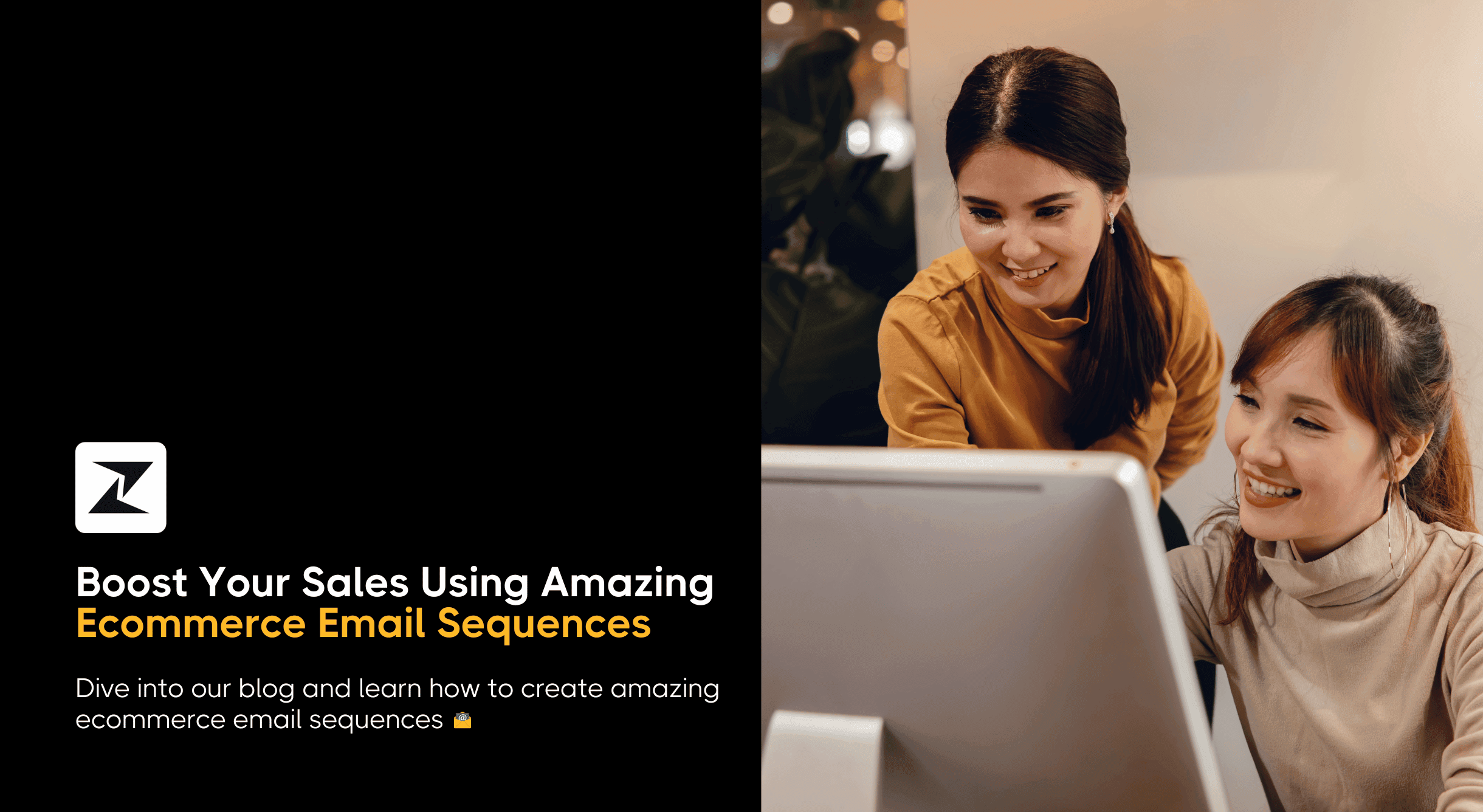
In the fast-paced world of ecommerce, where competition is tough and customers’ attention is short, you need powerful tools to stay ahead. Email marketing is one of those tools, but you will need more than just sending out generic messages.
The secret lies in creating smart email sequences automated series of emails that nurture leads, re-engage inactive customers and drive sales.
Think of these sequences as your silent salespeople, working around the clock to remind your customers about forgotten items, introduce them to new products, and gently guide them toward purchasing.
With that in mind, in this blog, I have mentioned 9 ecommerce email sequences that you can use to boost sales and get more out of your business.
Let’s get started!🤩👇🏻
What exactly is email sequence?
An email sequence is like a set of automated messages you send to certain people on your email list. It’s like having a conversation with your customers, but you don’t have to send each email one by one. First, you decide what actions will start the sequence, like someone signing up for your newsletter or leaving items in their shopping cart.
Then, you create a series of emails, each with a different goal, such as reminding them about their forgotten items or showing them new products they might like. Finally, email marketing software for ecommerce, such as Zixflow, takes care of sending emails at the right time, based on what the person does or doesn’t do.
So, scroll down to gain knowledge about 9 ecommerce email marketing sequences!
9 great ecommerce email marketing sequences
Email sequences help you keep in touch with your customers, bring back old ones, and make more sales without putting in a lot of effort. Now, let’s explore 9 amazing ecommerce email marketing sequences that help you boost your sales.
Welcome email sequence
A welcome sequence is a series of automated emails or messages that you can send to greet your new subscribers, introduce them to your brand, and encourage engagement. Here is how you can create a welcome email series easily:
- Warmly greet your subscribers and introduce your brand.
- Provide detailed information about what you offer, highlighting key features and benefits.
- Share valuable content related to your niche to help subscribers solve problems or achieve their goals.
- Attract subscribers with special promotions to encourage them to make their first purchase.
- Each email should include a clear prompt for subscribers to take the next step, such as making a purchase or following you on social media.
Let software like Zixflow handle sending this welcome email sequence and other below-mentioned email sequences at the right times. This saves you from doing it all manually.
Zixflow is a user-friendly omni-channel platform that helps you automate your email sequences. With its automation feature, you can set up a new sales cadence by selecting new, prebuilt, or cloned options.
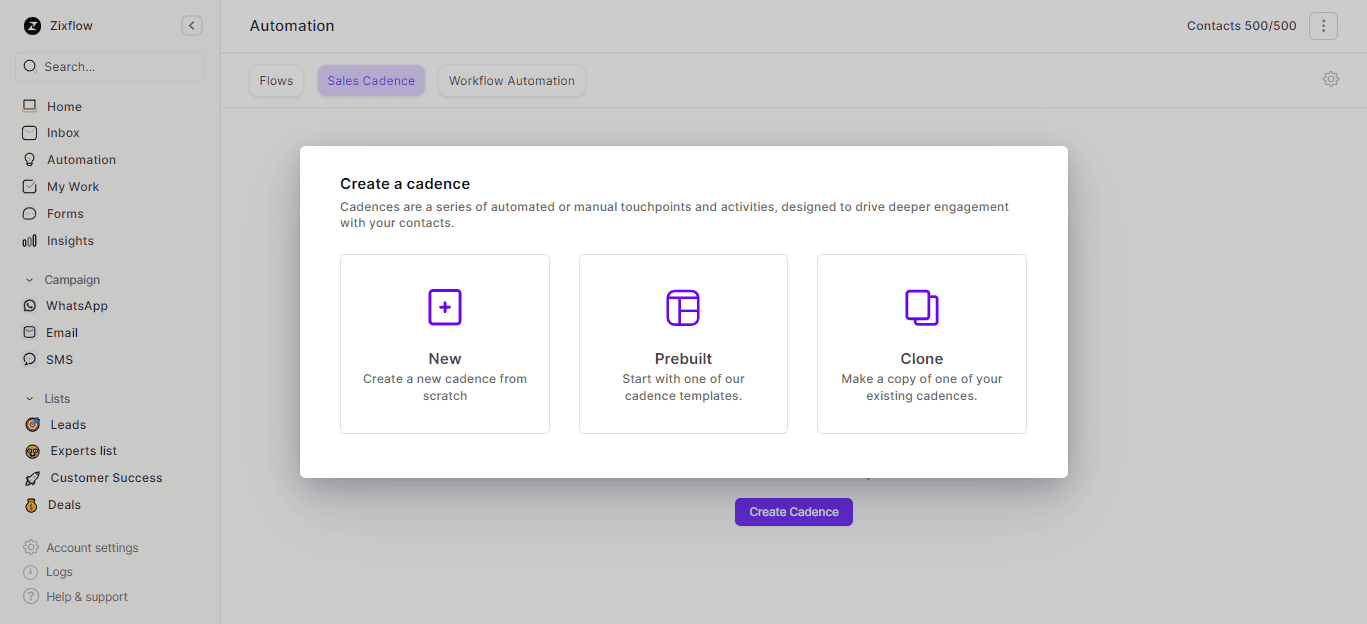
Choosing “Pre-Built Option” lets you pick templates to match what you want. You can make a bunch of emails for different days, and add more days if you need. You can also set when emails go out, so they match your schedule.
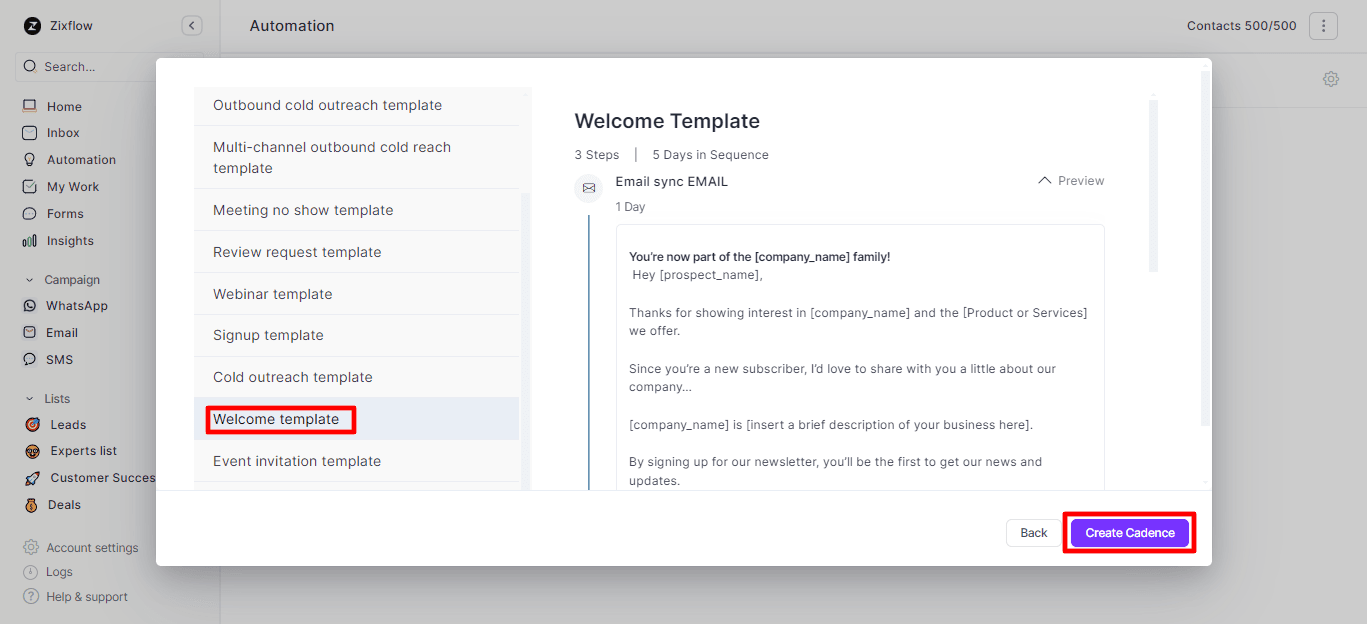
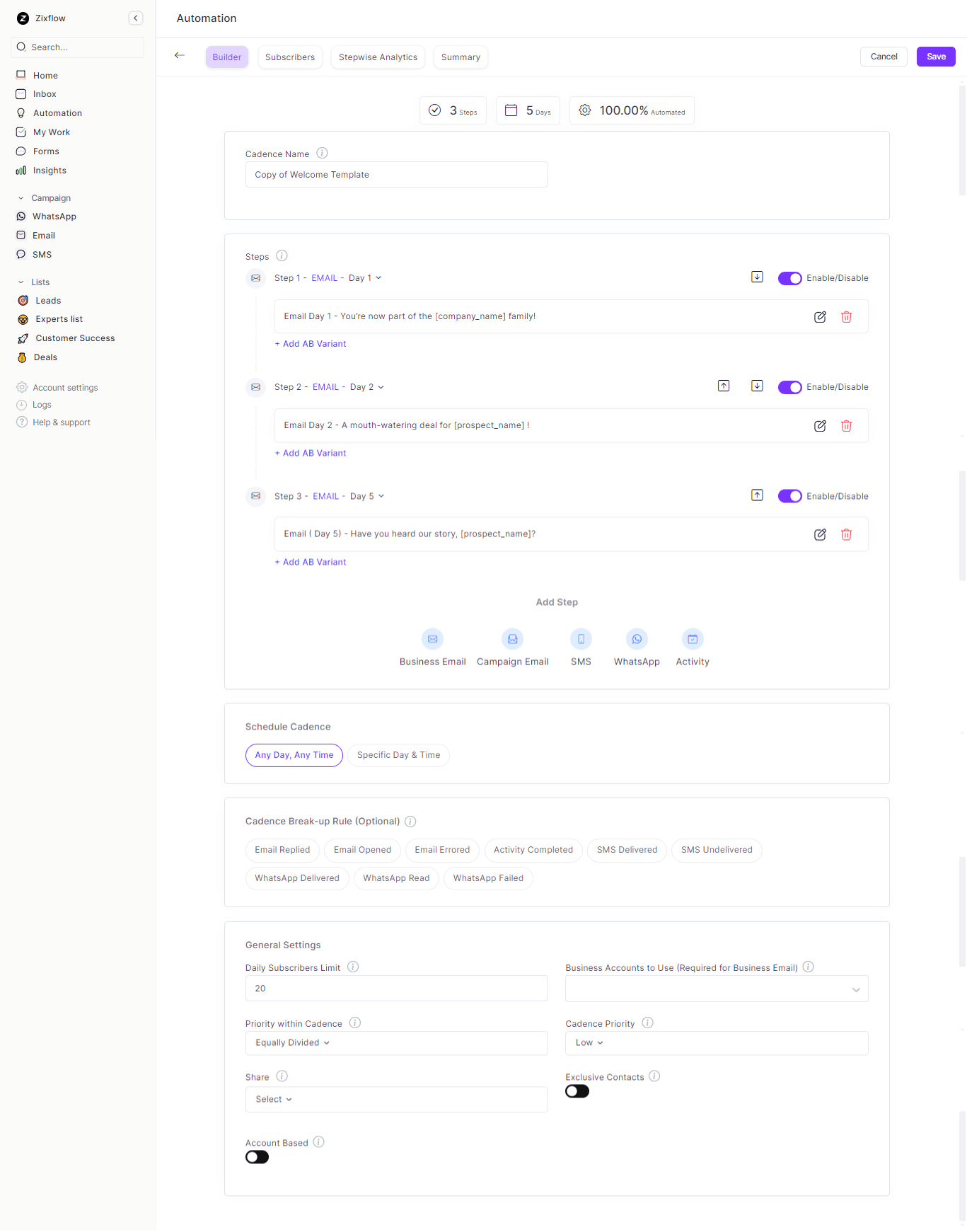
Zixflow offers stepwise analytics for your email campaigns, showing you the total emails sent, opened, links clicked, unsubscribes, and any errors. This helps you monitor your campaign’s performance in real-time, make better decisions, and improve your email strategies.
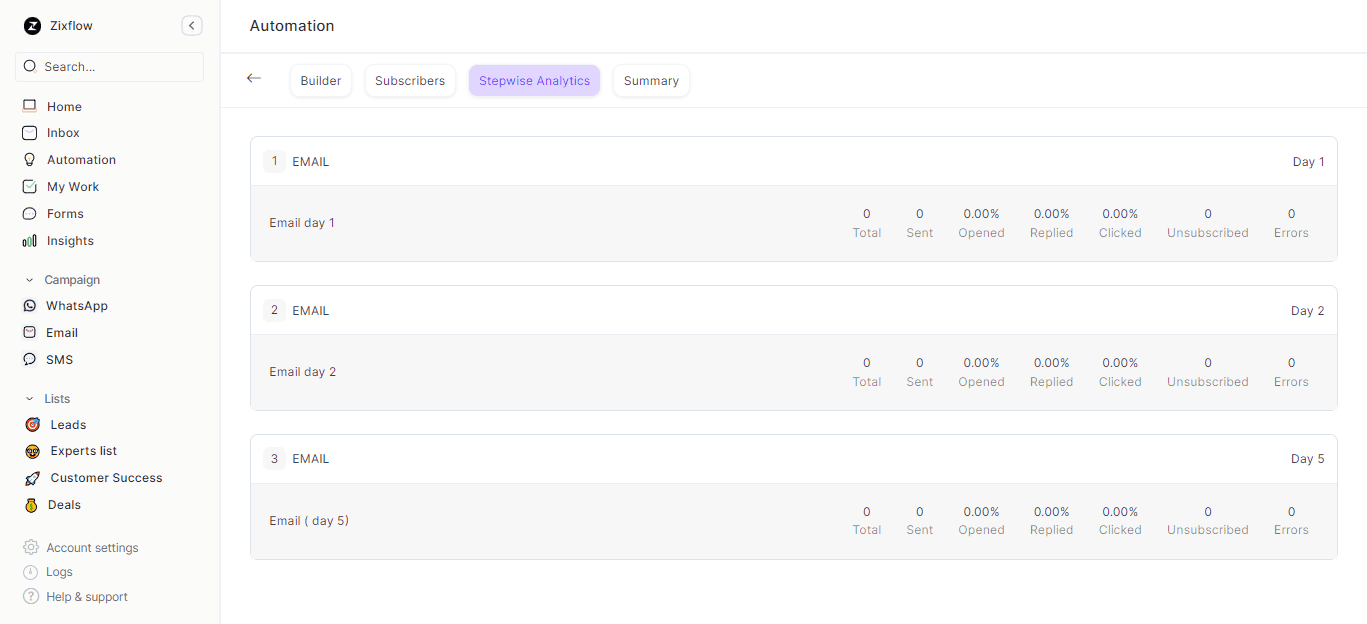
Not only can you use Zixflow’s AI-Wizard to generate emails, but you can also create visually captivating ones with the drag-and-drop email builder.
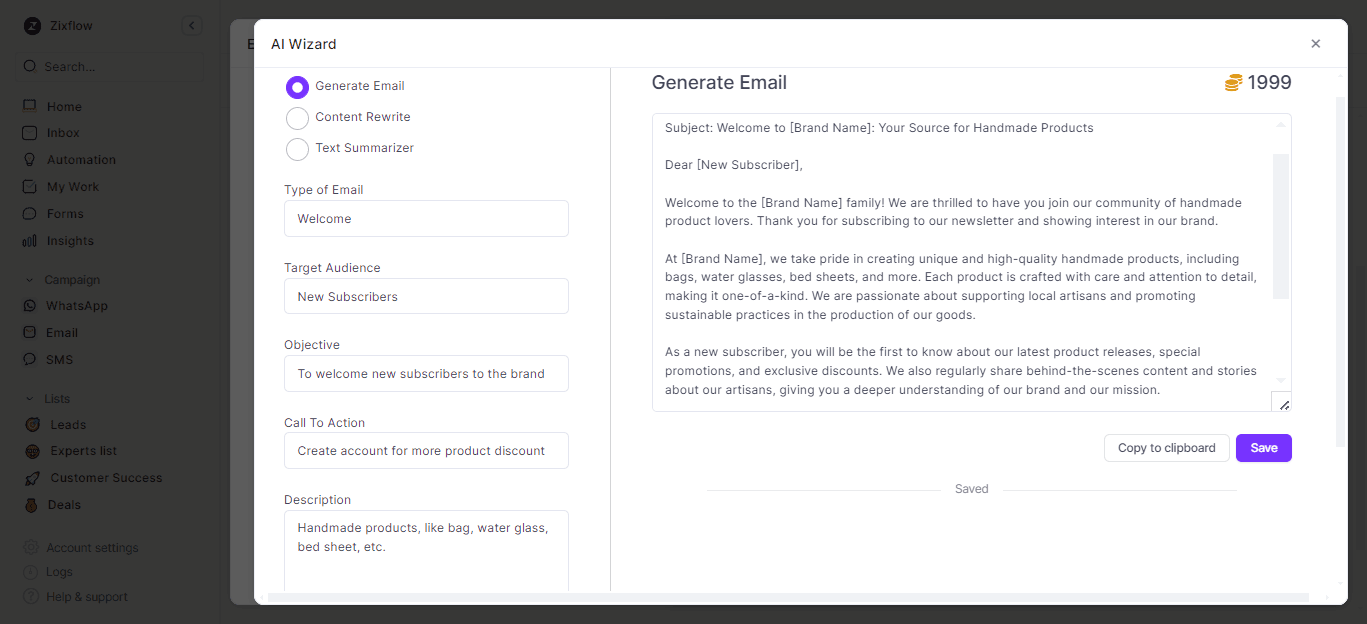
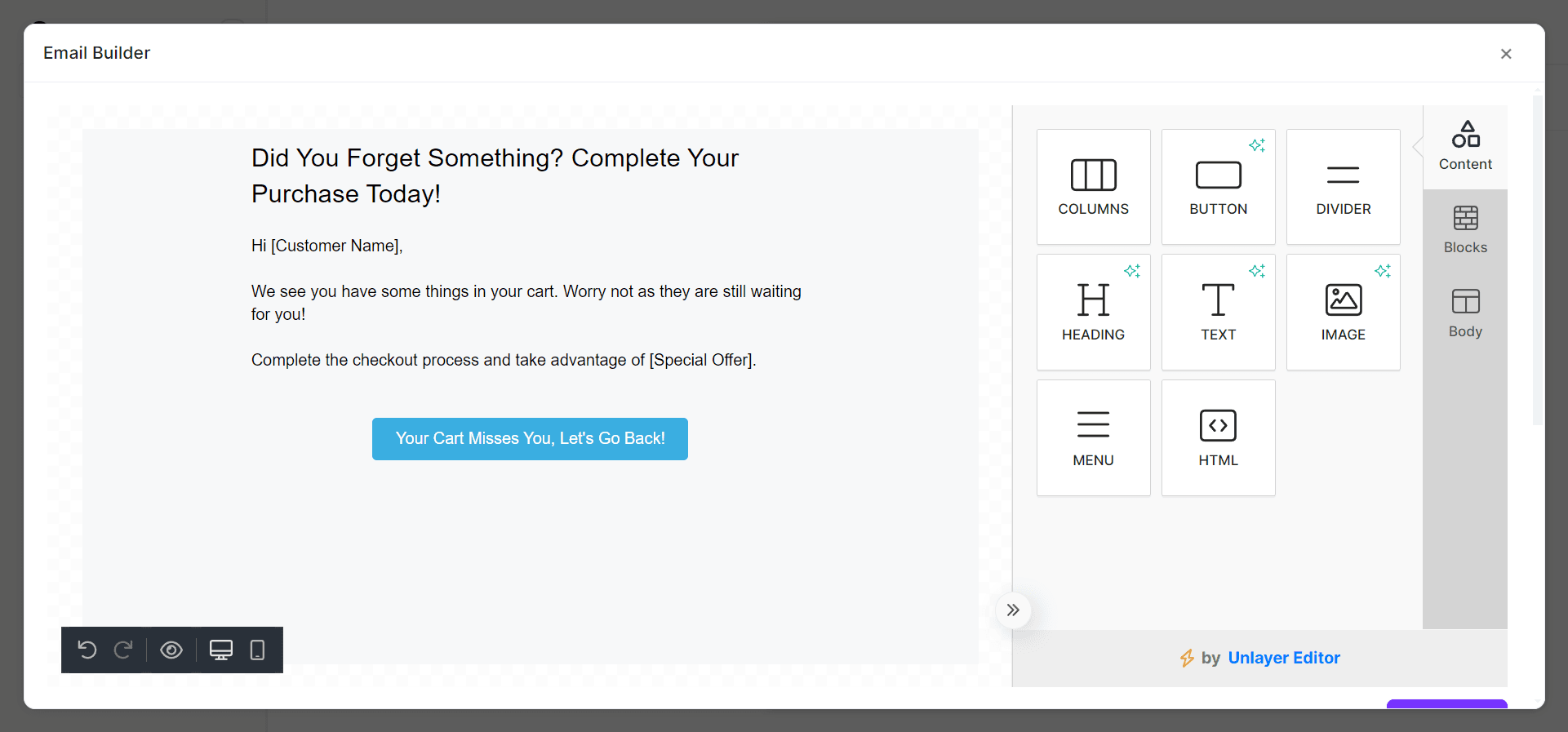
You can also watch Zixflow’s overview video to learn about its other amazing features and offerings.
Re-engagement email sequence
A re-engagement sequence is a series of messages designed to reconnect with your inactive subscribers or customers, reactivate their interest, and encourage them to re-engage with your brand which helps to ease your sales engagement model. This is how you can frame a re-engagement email sequence:
- Send a nice message to subscribers who haven’t been active, reminding them of the cool products your brand offers and inviting them to reconnect.
- Show your subscribers what they’ve bought or done with your brand before to remind them of the good times.
- Give your inactive subscribers special discounts or promotions to encourage them to get back involved with your brand.
- Suggest products based on what the subscriber has done before to get them interested again.
- Every email should have a clear button or link to encourage your subscribers to do something like visit your website, buy something, or update their preferences.
Seasonal/holiday email sequence
Seasonal/holiday email sequence is like special plans to help you sell more during specific times of the year, like Christmas or summer. It is useful because customers often buy more during holidays and certain seasons which improves customer engagement and skyrockets your sales. Follow the below-mentioned points to use holiday and seasonal email sequences:
- Choose the big holidays and seasons that matter to your business, such as Christmas or summer.
- Make emails that match the holiday or season. For Christmas, you could talk about gifts or offer special discounts, while for summer, you might promote items for outdoor fun.
- Figure out what actions from your customers will start the email sequence, like visiting your website or buying something in the past.
- Make the emails feel personal by mentioning things your customers like or bought before.
- Send reminders about the holiday or season, show off related products, and offer limited-time deals to create excitement.
Do you want to craft impressive ecommerce email sequences with ease?
With Zixflow, use the power of its automation feature to create diverse email sequences and boost sales effortlessly
Book Your DemoAbandoned cart email sequence
Another great ecommerce email sequence is an abandoned cart sequence. It is a series of automated emails or messages designed to re-engage with customers who have added items to their shopping cart but left without completing the purchase. This is how you can structure your abandoned cart:
- You can send a friendly reminder to your customer about the items left in their cart. Include images of the products, their names, and prices to jog their memory.
- Provide a discount or special offer to incentivize your customers to complete their purchase. This could be a percentage off their order or free shipping.
- If customers abandon their carts due to concerns like shipping costs or return policies, address those objections in a follow-up email.
- Create urgency by reminding customers that the items in their cart are in high demand or that the discount will expire soon.
- If your customer still hasn’t completed their purchase after several reminders, send a feedback request email to understand why they abandoned their cart. This information can help you improve your checkout process in the future and boost sales engagement.
Lead nurturing email sequence
A lead nurturing sequence is a series of automated communications designed to build relationships with your potential customers and guide them through the sales funnel. You can easily frame your lead nurturing series using the below-given pointers to make your sales processes easier.
- Send a personalized email to introduce your brand and thank the lead for their interest. Example: “Hi [Your lead’s name], thanks for connecting! We’re excited to share how our products/services can benefit you”.
- Provide valuable content that addresses your lead’s pain points or interests. This could be in the form of blog posts, ebooks, or webinars.
- Showcase specific features or benefits of your offerings to demonstrate value.
- Share success stories or testimonials from satisfied customers to build trust and credibility.
- Offer exclusive deals, discounts, or free trials to encourage your lead to take action.
- Include clear calls-to-action prompting your lead to engage further, such as scheduling a demo or contacting your sales team.
Sales email sequence
Sales email sequences are steps you take to turn your potential customers into actual customers. These steps help you build a relationship, show value, and address any concerns at different stages. Here is a simple look at how you can structure effective sales sequences:
- Start with an introductory email or call. Your goal is to introduce yourself, and your brand, and explain how you can help solve a problem the potential customer might have. This is about getting their attention without being too pushy.
- After the initial contact, follow up to make sure they got your message and to keep the conversation going. This gentle reminder helps move them forward.
- Now that they know a bit about you, explain how your product or service can solve their specific problem.
- Get them more involved by offering something like a free trial, a demo, or an invitation to a webinar.
- Potential customers often have questions or concerns. Address these with facts, testimonials, or additional information to help them feel more confident.
- This point is about finalizing the deal. Use clear calls to action, like setting up a closing call or sending a proposal to automate sales, so your customers know what to do next.
- After the sale, check in to make sure they’re happy and offer more support if needed.
Product recommendation email sequence
A product recommendation email sequence is a great way to personalize your marketing and drive more sales by suggesting products tailored to each customer’s interests. Here’s how they work and why they’re effective:
- First, gather data on your customers’ browsing and purchase history. This includes the products they’ve viewed, added to their cart, or bought in the past.
- Use this data to figure out which products each customer is most likely to be interested in. For example, if a customer frequently buys running shoes, recommend the latest running gear or accessories.
- Create a series of automated emails featuring these personalized product recommendations. Each email in the sequence has a specific focus, such as introducing new arrivals, showcasing bestsellers, or offering discounts on related products.
- Send the emails at strategic times or based on specific actions. For instance, if a customer views a product but doesn’t purchase it, they might receive an email with recommendations for similar items a few days later.
- These emails aim to engage customers by showing them products they’re likely to love, making their shopping experience more relevant and enjoyable.
Are you looking for a platform that provides pre-built templates to make ecommerce email sequences?
Get started with Zixflow. It provides pre-built email sequence templates so that you can quickly make email series
Login TodayCross/upsell email sequence
Upselling means convincing your customers to buy a fancier version of what your customers are getting, like suggesting a laptop with more cool features.
Whereas, cross-selling is when you suggest other products that go well with what your customers are buying, like suggesting camera gear when your customer buys a camera. Here is what you can include in your upsell/cross-sell email sequence:
- Start the sequence when something specific happens, like a customer making a purchase, adding items to their cart, or browsing certain products.
- For upselling, recommend more advanced versions of products they’re interested in.
- For cross-selling, suggest items that complement what they bought.
- Each email should have attractive images, clear descriptions, and a strong call-to-action (CTA).
- Send the first email soon after the trigger event, like right after a purchase or cart abandonment. Follow up with additional emails over the next few days or weeks.
- Offer special deals, like discounts or free shipping, on the recommended products. A special offer can encourage the customer to make a purchase. For instance, give a 10% discount on accessories if bought within a week of their original purchase.
- Each email should have a clear action for the customer to take, like “Shop Now”, “Add to Cart”, or “Learn More”.
Feedback email sequence
Lastly, the feedback email sequence is a crucial part of your email marketing strategy. It helps you gather valuable insights from your customers, improve your products or services, increase your relationship-selling approach, and show your audience that their opinions matter.
The feedback sequence typically starts after a customer has made a purchase or used your service. You can set it up to send a few days or weeks after the transaction, giving the customer enough time to form an opinion. This is how you can use the feedback sequence:
- The first email in the sequence is a friendly request for feedback. Keep it simple and genuine. Thank your customers for their purchase, and ask them to share their thoughts on the product or their shopping experience.
- If your customer doesn’t respond to the first email, a follow-up email is sent a few days later. This email gently reminds them about the feedback request and highlights how their input helps improve your offerings.
- To encourage more responses, you can include an incentive in this email, such as a discount on their next purchase or entry into a giveaway.
Increase your sales by implementing these ecommerce email sequences
Using these nine great email sequences can really help your online store sell more. These strategies make it easier to talk to your customers and convince them to buy. Whether it’s welcoming new subscribers, reminding people about the items they’ve left in their cart, or promoting special holiday deals, each email sequence has its own job in making sales happen.
Also, remember to use Zixflow. It doesn’t just offer email tools but also lets you connect with customers via WhatsApp and SMS. With Zixflow, you can schedule emails and focus on other tasks, making email sequence creation easier with automation. And by sending timely emails, you can build better customer relationships and boost sales.
So, create your free account today to streamline your email sequence process effortlessly.
